Author: Alex Shanks-Abel
One of the most common reasons people give for getting into homebrewing is to brew styles that are difficult to find commercially available locally, which I can certainly relate with. Even as the availability of a wider variety beer has increased, I’d never heard of a commercial brewery making anything close to Keptinis, a traditional Lithuanian style of beer whose flavor is just as unique as the methods used to make it.
It’s only through the incredible work of Lars Marius Garshol that modern brewers were introduced Keptinis, which he provides the following eloquent description for:
This is a dark beer made with pale malts, where the color comes from the baking of the mash. In normal dark beers, the color comes from drying the malts at high temperature. The heat makes the starch and protein in the malts go through Maillard reactions, producing the color and the roasty flavors. But in this beer it was the mash that had been baked. What went through the Maillard reactions was mostly sugar, not starch. So of course the flavor wouldn’t be the same.
In addition to the baking of the mash, Keptinis is technically a raw ale, meaning it doesn’t go through a typical boil step. Rather, hops are boiled in a relatively small volume of water to create a tea that gets added to the wort prior to fermentation. While some Lithuanian farmhouse brewers rely on yeast that has been in their family for generations, the use of commercial yeast is common, and Lars notes it should be “something fairly neutral.”
I made my first batch of Keptinis soon after reading Lars’ blog post back in 2018. A couple smoke alarms later, I ended up with a syrupy sweet beer that had an inky black color, and while it was quite delicious, it was a bit darker than I’d intended. Determined to make a version that more closely resembled the images I’d seen of Keptinis made by Lithuanian farmhouse brewers, I modified the approach I’d previously taken, opened all the windows in my house, and gave it another go!
| Making Grand-as Duchy-as Keptinis |
I relied heavily on the information shared by Lars on his blog when developing this Keptinis recipe and made an effort to match the traditional approach closely, though some changes were made based on my batch size and equipment.
Grand-as Duchy-as Keptinis
Recipe Details
| Batch Size | Boil Time | IBU | SRM | Est. OG | Est. FG | ABV |
|---|---|---|---|---|---|---|
| 5.5 gal | 0 min | 14 | 4.7 SRM | 1.071 | 1.018 | 6.96 % |
| Actuals | 1.071 | 1.018 | 6.96 % | |||
Fermentables
| Name | Amount | % |
|---|---|---|
| Pilsner | 15 lbs | 100 |
Hops
| Name | Amount | Time | Use | Form | Alpha % |
|---|---|---|---|---|---|
| Celeia | 30 g | 15 min | Boil | Pellet | 3 |
| Ariana | 20 g | 15 min | Boil | Pellet | 10.2 |
Yeast
| Name | Lab | Attenuation | Temperature |
|---|---|---|---|
| Flagship (A07) | Imperial Yeast | 77% | 60.1°F - 72°F |
Notes
| Water Profile: Ca 35 | Mg 0 | Na 0 | SO4 39 | Cl 34 |
Download
| Download this recipe's BeerXML file |
After collecting RO water and adjusting it to a neutral mineral profile, I set the controller on my Brewfather to bring it to a boil.

While waiting on the water to heat up, I milled the grains, opting to use the same brand used by Vytautas Jančys.
I then evenly split the grist between four aluminum roasting pans.
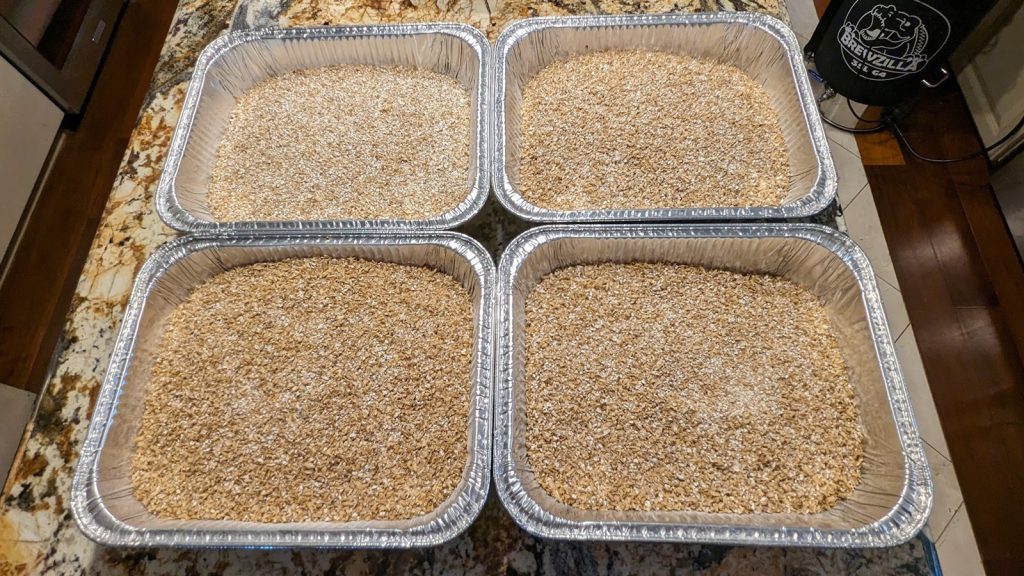
Next, I gently poured about 0.4 gallons/1.5 liters of the boiling water into each pan, just enough to achieve a thick mash that resembled the consistency of oatmeal.

Whereas Lars recommends an initial mash temperature of 149°F/65°C based on what he observed in Lithuania, where the brewers have honed their skills, my starting temperature was a bit warmer at 161°F/72°C.
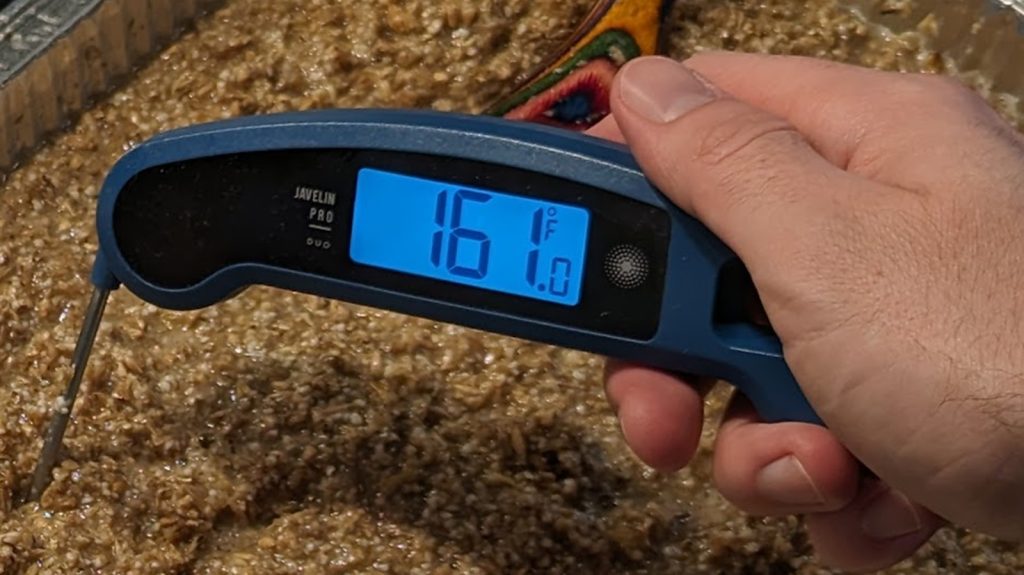
The mash pans were left to rest on my kitchen counter for an hour with no temperature control, after which they were at 156°F/69°C. The pans were placed in a preheated 350°F/177°C oven where they were left alone for 2 hours before I shuffled them around and let them continue baking for an additional 2 hours.

At the end of the 4 hour bake, I removed the pans from the oven and noticed they’d developed a nice smelling crust that I couldn’t resist sneaking a couple bites of – delicious!

After thoroughly stirring each mash to break up the crust, I carefully poured them into a mesh bag that was submerged in 6 gallons/23 liters of 177°F/81°C water.
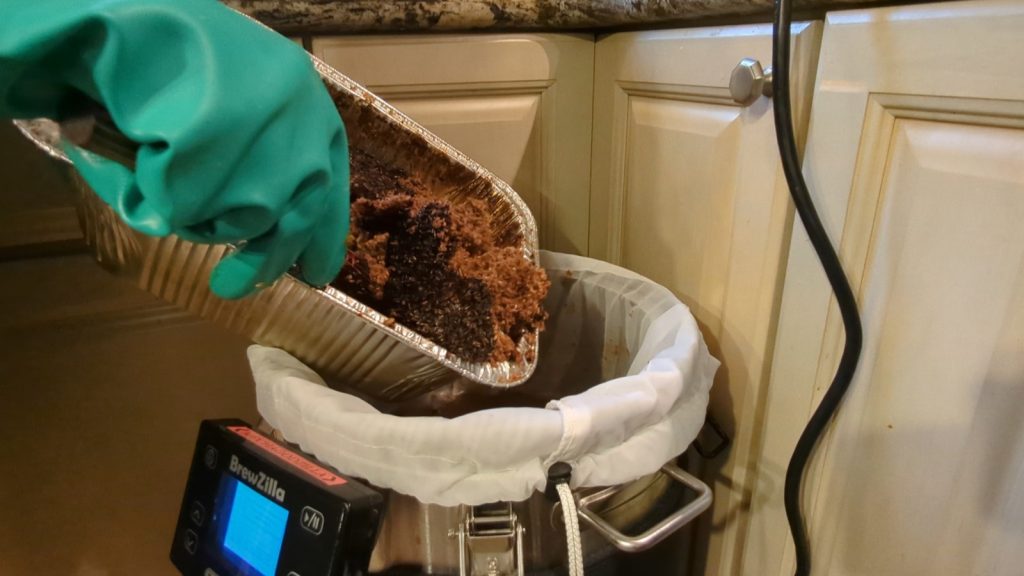
During this modified sparge step, I weighed out the hops.
The hops were then boiled in 0.25 gallon/1 liter of RO water for 15 minutes.
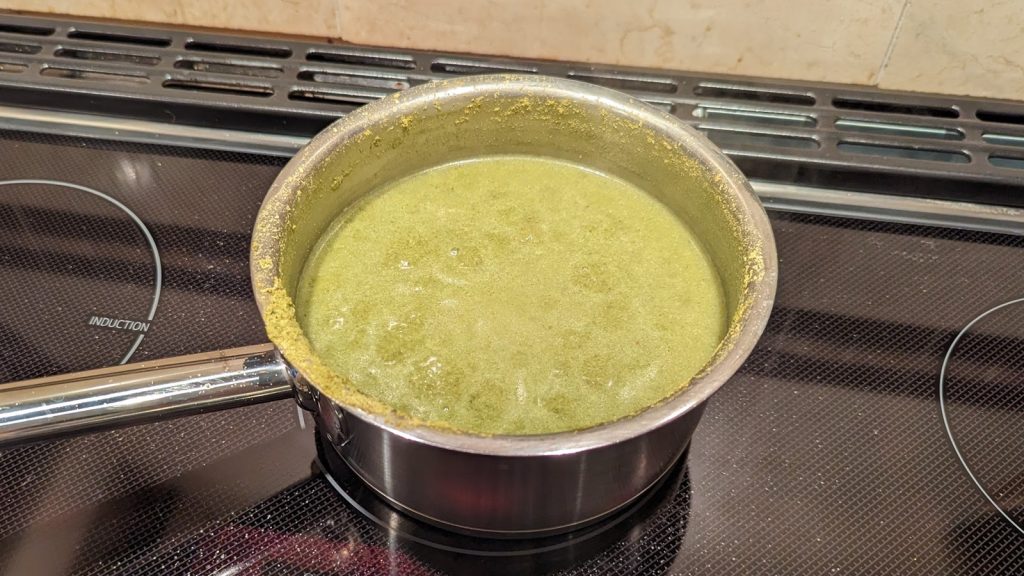
When the 1 hour sparge rest was over, I transferred the wort to a sanitized fermentation keg and added the hop tea. A refractometer reading indicated the wort was at a respectable 1.071 OG.
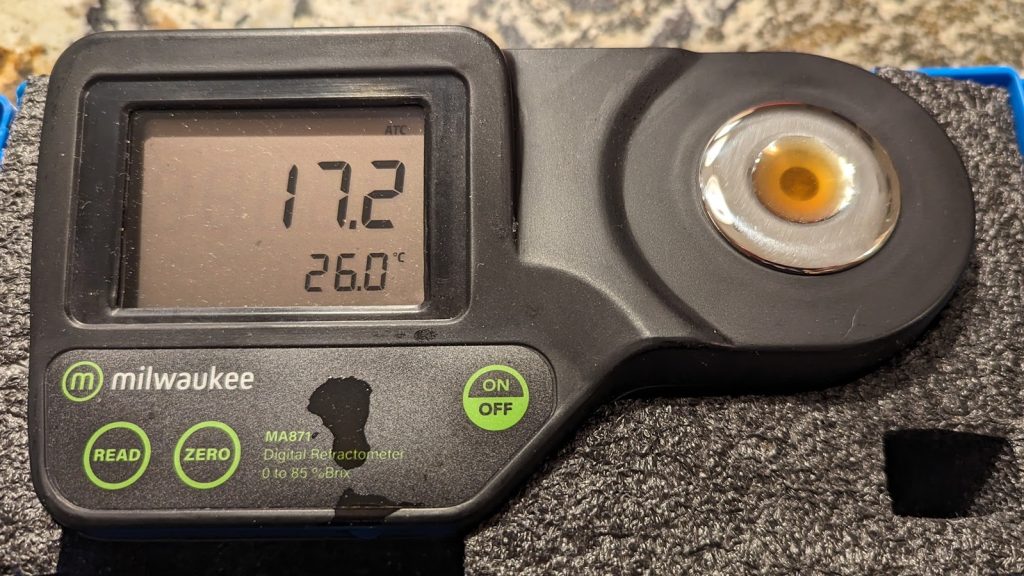
Considering Lars’ comment about a general absence of notable fermentation character in the Keptinis he drank in Lithuania, I pitched a pouch of Imperial Yeast A07 Flagship into this batch.
The beer was left to ferment under 15 psi of pressure at 68°F/20°C for 10 days before I took hydrometer measurements showing it was at 1.018 FG, a little bit higher than intended due to the unexpectedly warm mash temperature.
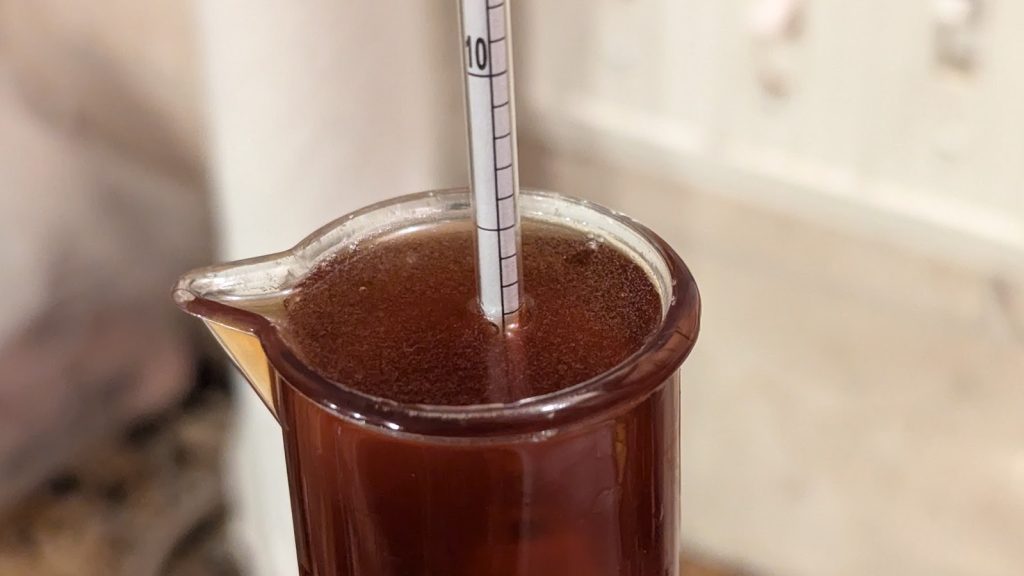
At this point, I pressure-transferred the beer to a CO2 purged serving keg that was placed on gas in my keezer for a couple weeks before it was carbonated and ready to drink!
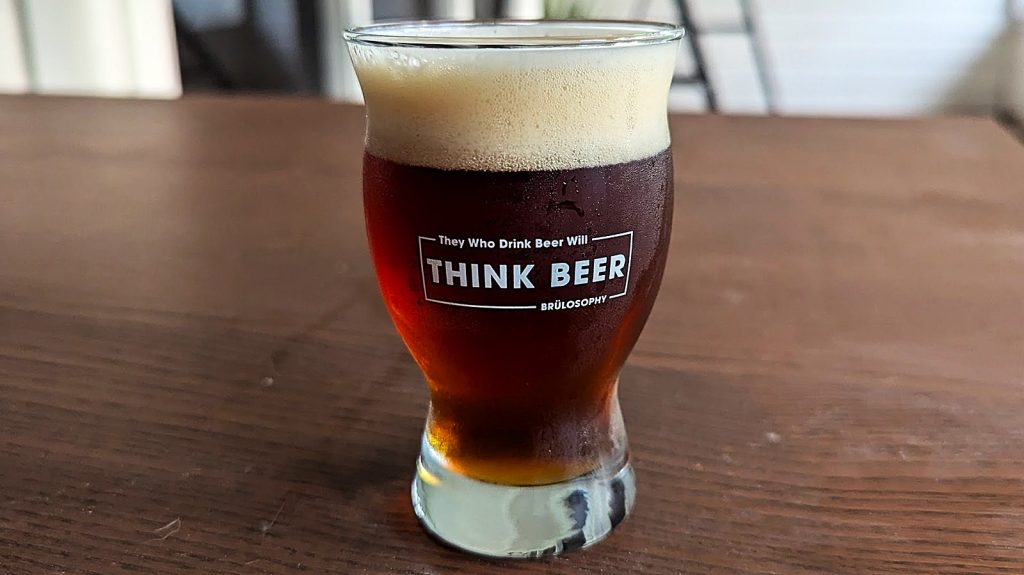
| IMPRESSIONS |
Seeing as the only other example of Keptinis I tried prior to this one was the first version I made back in 2018, I didn’t really have a good way to gauge how well it represented classic examples brewed halfway across the world. However, I can say that this batch absolutely checked every box I had going into brew day and aligned well with the description Lars provides on his blog. It had a complex blend of caramel, brown sugar, and gentle roast with a notable earthiness that contributed to its rustic nature. While bitter enough to balance the sweetness, there was minimal hop flavor and aroma, and the fermentation character was very clean.
The feedback from those I shared this Keptinis with was largely focused on the malt character, with several people agreeing that it had a “super decoction” flavor, likely a function of the Maillard reactions that occurred during the mash baking process. Despite its generally rich flavor, this beer was surprisingly drinkable, much more so than a beer whose color and flavor was imparted by the heavy use of caramel/crystal malts. Even in the summer heat, I found myself pouring pint after pint of this tasty beer.
In the years I’ve been homebrewing, I’ve adopted numerous methods intended to simplify and hasten the brew day, but there’s a certain magic to brewing a style as uniquely involved as Keptinis. In addition to tapping into the experiences of those half a world away from me, the prolonged process and constantly evolving malty aromas filling the air throughout the day remind me of why I got into the hobby in the first place. Will I brew Keptinis again? Absolutely! Only my next batch will come much sooner than the 6 years between my first batch and this one. I’ll have my mop and box fan ready!
If you have thoughts about this recipe or experience making something similar, please feel free to share in the comments section below!
Support Brülosophy In Style!
All designs are available in various colors and sizes on Amazon!
Follow Brülosophy on:
FACEBOOK | TWITTER | INSTAGRAM
If you enjoy this stuff and feel compelled to support Brulosophy.com, please check out the Support page for details on how you can very easily do so. Thanks!


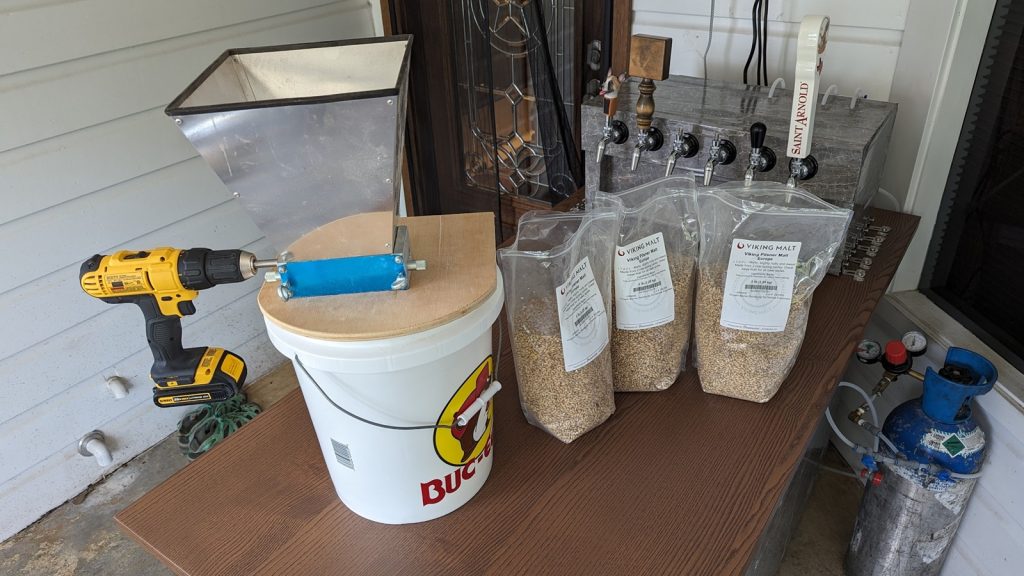

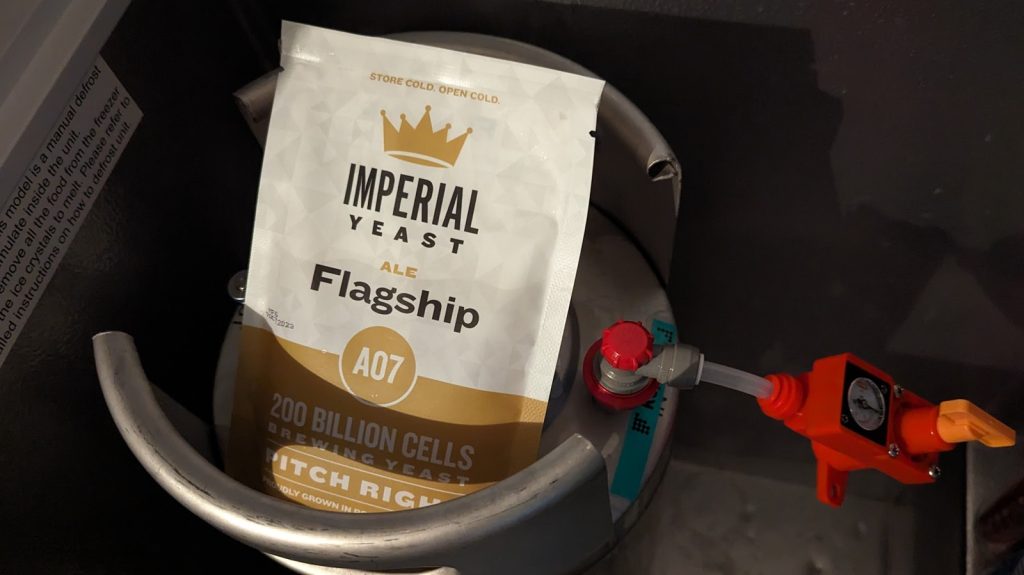











8 thoughts on “Brü It Yourself | Grand-as Duchy-as Keptinis”
What a great post and awesome to read about a style largely unheard of. I would love this to form a podcast in the months ahead to dig deeper into this..
Thanks!
Did you strain the hop tea or dump it in as shown?
What was the purpose of fermenting under pressure? I assume that is not traditional?
Sounds incredible. Thanks for your persistence and for dialing this in. Might actually try to make this.
This is a fascinating method for brewing a unique beer. I would be curious to know whether this ale/unboiled method eventually allows for spoilage to become a problem as the beer ages in the keg. I am sure it can get complicated but it would also be interesting to do a split batch experiment to determine the effects of doing a boil.
Amazing! I must try this.
i’ve brewed it a few times as a small batch with 3 kg grain so easier on oven capacity and also sometimes just baked part of mash for same reasons to get the unique oven baked malt flavours which are much nicer and gentler than crystal malts to my palate. delicious soft caramel forms at the edge of the tray if just baked for 30 minutes for a intense golden coloured beer. I’ve also tried it with some oats which makes the baked mash smell even more like biscuits. just lightly hopped with magnum it’s delicious.
Man, this sounds like it checks all the boxes – malty-rich without being cloying, and still easy to put down. I may have to make a pass at a session version of this sometime in the near future. Thanks for sharing!
I am excited to give this a try. Thanks for posting something outside of the box. In my follow up research on this style I came across the original article by Joe Strange and Lars Marius Garshol. They had much lower OG and FG (1.054 & 1.004). I am wondering why you have targeted a much heavier beer.